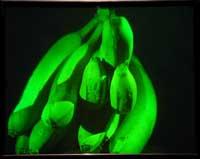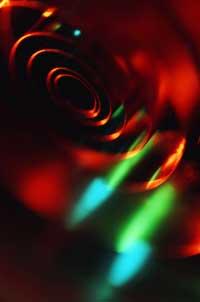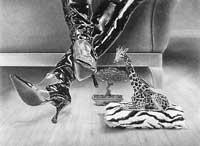The reflection of holography in current technology
2003/08/08 Galarraga Aiestaran, Ana - Elhuyar Zientzia

Some applications of holography are so everyday that many people don't realize it. But if you look at the ticket in your hands, you would immediately see the bright band from top to bottom on the back and right. This is a hologram in which, if you move the ticket, the symbol of the euro and the amount of the ticket is indicated. Credit and phone cards also show a hologram to check its authenticity.
Holography was born in the 1940s. In fact, the first hologram made by Nobel Laureate scientist Dennis Gabor. His intention was to improve the electronic microscope by means of a photographic record of images. This record was based on two steps; it was recorded on a photographic plate and, after revealing it, a ray of light was passed to form the image of the object on a screen.
Gabor did not achieve the goal, but he invented an interesting way to get images. He took the name of the Greek, because holos means ‘everything’. Subsequently, Emmet Leith and Juris Upatnieks, using laser, greatly improved the system.
Holograms, more real images
The hologram is much more real, more complete than the photo. A photo only collects the amplitude of the light and the wavelength. And the color is achieved by mixing the three basic colors and using filters. The hologram collects the real colors. Why?

A light source sends to space a spherical wave; at a distance from the source, the wave is identical. However, when you encounter an object, the wave is altered and you lose the esfericity. When looking at the object, the two eyes do not receive the same information, but the work done by the brain makes the image restructure and look in three dimensions. A hologram collects all the wave: amplitude or intensity, wavelength or color, and phase or direction of the rays.
The hologram is performed using laser. The laser enables accurate wavelength light beams to be obtained. This light is divided into two: one of them, the reference beam, is sent directly to the support and the other is reflected by the object. When both are joined, interference occurs: the two waves of the same phase generate a higher intensity wave, and if the phases of the waves are opposite they are eliminated. These variations of intensity associated with the phase are recorded in the material, allowing to collect all the light and obtain the relief.
Technological applications of holography
One of the most interesting applications of holography is the storage capacity of information. Holographic memory is similar to three-dimensional photography. However, unlike photographic films, several 'images' can be stored in the material of holographic memory, one over the other.

Reference rays emitted from different angles are used for this purpose. Then to read the 'images' two crossed laser beams are used to retrieve the light model used in writing. The information obtained will depend on the angle from which the support is viewed, as in normal holograms. In this way, a lot of information can be stored in a small support and with this the memory of the CDs is expected to increase greatly.
Holography also serves to unravel the secrets of matter, since molecules can be seen in three dimensions thanks to a technique based on holography. This technique has a huge resolution, around an angstrom, i.e. the size of an atom approximately. As in other applications, it is about recording the interference between two rays, one altered by the object and the other not. The rays used, instead of being laser, are x-rays or electrons. This allows knowing the structure of the molecules.
These two applications are just examples, since there are many more, for example, some scientists have invented the way to transform radio waves into images, it can even be used to turn the flat screen of television into three-dimensional, to make concrete measures... It is clear that holography serves more than just to seduce children!
Holography in safety systems Perhaps the most well-known and widespread application is security systems: these special images are the usual ones in banknotes, credit cards, identification cards, etc. Although bright and eye-catching, they are not used as ornaments, but to hinder the work of counterfeiters. And it is that making a hologram is not very simple: on the one hand, you have to know how to do and on the other, you need special tools like lasers. In addition, for counterfeiting, the hologram object and the entire hologram processing process must be identical. When selecting a wavelength, angle or phase or phase, the results are different. To read the result and reconstruct the image it is necessary to use the same configuration. So many factors make it almost impossible to fake a hologram. |
Posted in Zabalik.

Gai honi buruzko eduki gehiago
Elhuyarrek garatutako teknologia






